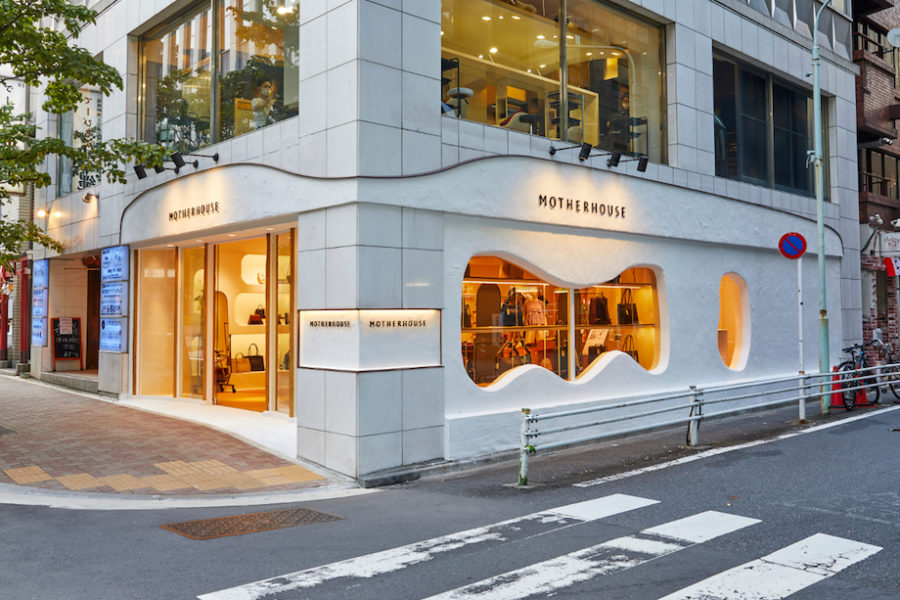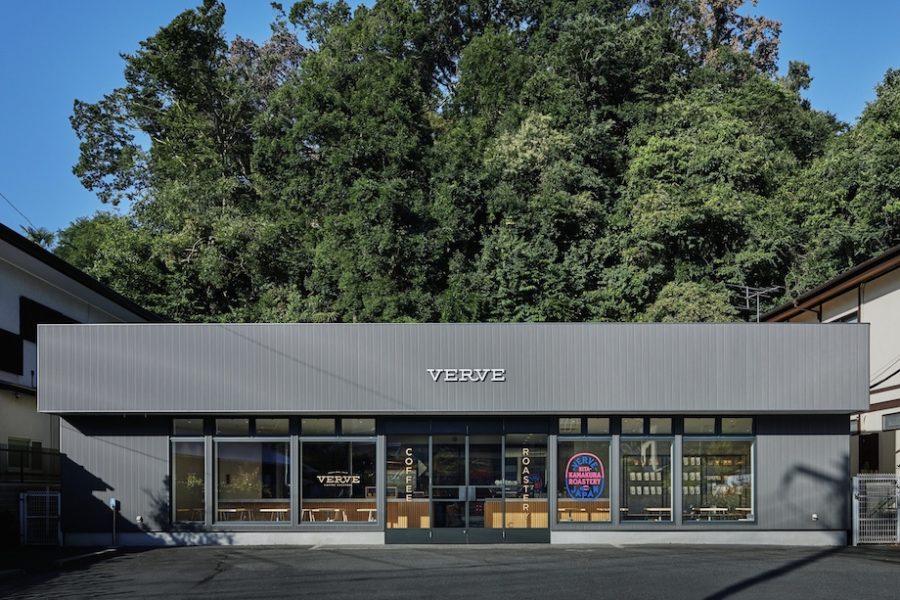
CULTURE

市松状の屋上が自然な交流を生み出すスポーツ&アートセンター
中国・深圳の高校に建つ キャンパス内の動線をつむぐ段状の建築〈New Sports and Arts Centre of Hongling High School〉

©︎ Chao.Z

©︎ Chao.Z
中国の深圳に位置する紅嶺高校の中心部に建つ〈New Sports and Arts Centre of Hongling High School〉は、背後の山に連なるよう段状にデザインされた文化・スポーツ活動のための施設です。
クラブ活動やアート教室を行うことのできるトラス・ボックスと屋外のスポーツコートが市松状に並び、さまざまな活動を許容する屋上空間が特徴的な建築となっています。
既存施設を結ぶネットワークの起点としても機能しており、キャンパス内の移動中にさまざまな活動に触れることで、自然に交流や対話を育むことを目標に設計されています。中国の設計事務所 O-office Architectsが設計しました。
(以下、O-office Architectsから提供されたプレスキットのテキストの抄訳)

©︎ Chao.Z

©︎ Chao.Z
急速な都市化により都市は均質化されつつあり、学校も例外ではない。急速な人口増加と教育需要の圧力の下、キャンパス建設は迅速な建設と複製モデルに依存している。
学校の建設は、ただ仕様を満たす標準的な設計モデルに単純化されており、学校建築が体現すべき人文精神や社会文化的な機能が欠如していることが少なくない。

©︎ Chao.Z
私たちは、紅嶺高校の改築・拡張プロジェクトを、同校の環境再生の重要な機会と捉え、新しい自然構造と共生する空間論理を取り入れることで、キャンパスと自然環境とのつながりを再構築し、新しいキャンパス空間と場所の感覚を生み出そうと考えた。
私たちの設計目標は、既存のキャンパスの中心エリアを活用し、文化・スポーツ活動のためのより広々としたスペースを備えた総合的な施設を創出すると同時に、キャンパス内の内部接続、コミュニケーション、共同利用を再構築することである。
これにより、人と自然が共生する環境が育まれ、キャンパスの都市化された開発モデルが変化することとなる。

©︎ Wu Siming

©︎ Chao.Z
自然との共生
設計の重点は、単なる量的な拡張ではなく、建物や敷地環境における本質的な問題への取り組みに置くことで、建築やキャンパスの精神、空間適応性と柔軟性、総合的な文化的な側面への配慮につながる。
デザインは敷地と自然から直接的に生み出された。南側にそびえる山を延長したような段状の建物となっており、この建物の屋上にはさまざまな大規模な活動を許容する、幅約30mの縦長の屋外スペースが2つある。

©︎ Wu Siming

©︎ Wu Siming
連続した屋外スペースの上には、30m四方のモジュラー・トラス・ボックスが段状に並んでおり、屋外スポーツコート、クラブ活動、屋内アート教室などが設けられている。
これらの活動モジュールは全部で8つあり、南から北に向かって傾斜に沿って配置され、自然な段状の屋上活動クラスターを形成している。

©︎ Wu Siming

©︎ Wu Siming

©︎ Wu Siming
空間の織り交ぜ
キャンパスの空間と動線を総合的に再編することが、このプロジェクトのもう1つの重要な目的であった。
建物は、単に空間を囲み、機能的な用途を提供するだけでなく、キャンパス内の動線および拡散装置、そして多様な活動の発生源としての役割も果たすべきである。言い換えれば、建物はプラットフォームとしてだけでなくネットワークとして機能すべきであり、人々が自由に浸透し、流れ、統合できる多孔性のスポンジのようなものであるべきなのである。

©︎ Chao.Z
段状になったインフラの上に構築された「上部構造」は、半屋外の自然活動拠点として機能するだけでなく、屋上ランドスケープの循環ネットワークも形成している。
東側では、新たな通路により、既存の建物の各階とつながっており、北側では、段状に再形成された既存のランドスケープと接続している。
これにより、東側と北側において、新しい総合施設は既存のキャンパスと混ざり合い、これまで不均等に分散していた内部交通を再処理し、有機的な全体へと再編成している。

©︎ Wu Siming
教育の定義と概念は過去10年間で大幅に変化しており、この変革は今後も継続し、加速していくと予想される。
そのため、キャンパス空間の柔軟性と適応性は、学校施設の利用率を高め、限られたキャンパス資源を最大限に有効活用し、将来のキャンパス活動の予測不可能な需要に対応するために不可欠であると言える。

©︎ Chao.Z
このプロジェクトのインフラ戦略は、段状に配置された建物に、さまざまな屋内活動スペースを連続的に配置できるようにすることであり、起伏のある地形により、あらゆるタイプの屋内活動エリアが形成され、すべてのエリアがオープンで多目的に利用できる。
さらに、屋上のトラス・ボックス・ユニットにより、将来的な変化に対応するためのスペースが確保されている。

©︎ Chao.Z

©︎ Chao.Z
日常的な共有スペース
キャンパス内の交通手段は、点と点を結ぶ、単なる移動手段にとどまるべきではない。また、授業後のキャンパスライフは、教室や寮、スポーツ施設間の移動にとどまるべきではない。
新しいスポーツ&アートセンターには、それぞれ約4,000m²の2つの大型総合スポーツスペースがあり、バスケットボール、バドミントン、卓球、体操、水泳など、さまざまなスポーツに対応している。

©︎ Chao.Z

©︎ Wu Siming
さらに重要なのは、目的の施設へのアクセスのために1階を通ることで、キャンパスのさまざまな場所とつながり、毎日の通学や各種スポーツ活動を通じて自然に多様な交流や対話が生まれることにある。
新しいスポーツ&アートセンターの傾斜した屋根には、芸術活動のための教室(楽器、ボーカル、ダンス用)と8面の屋外スポーツコートが設けられ、寮と教育エリアの間をつないでいる。

©︎ Wu Siming

©︎ Wu Siming
芸術、スポーツ、自然の間を移動する日常的な体験は、キャンパスに新たなオープンスペースをもたらし、学生たちの3年間のキャンパスライフを、この場所、空間、人々との鮮明な思い出と感情的なつながりで豊かにする。
異なるカリキュラムや活動の間を移動する際など、日常的な場面において、空間の自律性は利用する人々に還元されるべきである。心、身体、空間、自然、教師と生徒の交流が統合されることで、活気のあるキャンパス全体の雰囲気をつくり出すだろう。

©︎ Wu Siming

Design mission

Design schematic

Natural ventilation

Architectural strategy for an effecient construction

Technical sectional perspective

Axonometric drawing
以下、O-office Architectsのリリース(英文)です。
Project Information:
Project Location: Futian District, Shenzhen City, Guangdong Province, China
Architecture/Interior/Landscape Design: O-Office Architects
Design Team: He Jianxiang, Jiang Ying, Dong Jingyu, Wu Yifei, Chen Xiaolin, Yang Jian, Huang Chengqiang, Wang Yue, Wu Siming, Peng Weisen
Site Architect: Yang JianLDI(Construction Documents Design): Chen Guodong, Zhao Yaqing, Wang Chunpei, Chen Guojun, Tan Zhuoping, Liu peng, Liu Yu, Wan Likun, Shang Shuangshuang, Liu Wentao, Du Jianwei, Jiang Qinfu, Chen Yifu / CMAD
Structural Consultant: Lao Yun, Ye Guoxiang, Zou Yongqiang / RBS Architectural Engiuneering Design
Façade design Consultant: Yang Kangle, Zhong Zaishun, Chen Chaohui / TFC
Landscape design Consultant: Pan Yongren, Chen Mange, Huang Xiaolin,Feng Chun / TOP DESIGN
Signage design: Hu Guangjun, Wu Peixin, Chen Xinjun / Gwangjun.comClient: Shenzhen Futian District Public Works Department
Agency Construction Unit: Shenzhen Vanke CO.,LTD
Construction Project Management team: Zheng Feng, Deng Weidong, Ren Shubo, Liang Jiamei, Zhan Haibin, Luo Wei, Lin Nian
Constructor: Fanhua Construction Group Co.,Ltd.Site Area: 13686m²
Gross Built Area: 22047m²
Structure Form: Frame-shear wall structure, steel truss structure
Design: 2018
Completion: 2023Photographer: Wu Siming, Chao.Z
Contexture of a Community Hill: New Sports and Arts Centre of Hongling High School
Proposition
Rapid urbanization has turned cities into highly homogeneous, self-replicating standard coding systems, and schools are no exception. Under the pressure of rapid population growth and educational demands, campus construction relies on rapid building and replication models. School buildings are simplified into standard design paradigms that “meet specifications” and routine construction production, often lacking the humanistic spirit and social-cultural functions that architecture, especially campus construction, should embody.
We view the renovation and expansion project of Hongling High School as a crucial opportunity for the school’s environmental rebirth. The design will attempt to re-establish the connection between the campus and its natural environment by incorporating new natural structures and symbiotic spatial logic, creating new campus spaces and a sense of place. Therefore, our design goal is to utilize the central area of the existing campus to create a comprehensive venue that provides broader spaces for cultural and sports activities, while rebuilding internal connections, communication, and sharing within the campus. This will foster an environment where humans and nature coexist symbiotically, altering the urbanized development model of the campus.
Building with Nature
The new construction will no longer adhere to the previous urban expansion model. Instead, the design focus will shift from mere quantitative expansion to addressing intrinsic issues within the building and site environment, leading to considerations of the architectural and campus spirit, spatial adaptability and flexibility, and comprehensive cultural aspects.
The design originates directly from the site and nature. The terraced buildings, from a topographical perspective, extend the natural mountain form to the south, descending northward at a slope of approximately 10%. Between the three terraced buildings, there are two longitudinally undulating landscape spaces about 30 meters wide, integrating various large-scale activity spaces from the project brief. Above the continuous landscape space, modular truss boxes measuring 30 meters square are set up between the terraced buildings, housing rooftop outdoor sports courts, club activities, and indoor art classrooms. These activity modules, eight in total, follow the slope from south to north, forming a natural terraced rooftop activity cluster.
Interweaving of Space
Another key objective of this proposal is to comprehensively reorganize the space and traffic flow of the Hongling campus through this construction update. Buildings should not only serve functional uses and provide spatial enclosures but also act as conduits and diffusers of campus traffic and generators of diverse activities. In other words, buildings should primarily function as platforms and networks, resembling a porous sponge where people can freely permeate, flow, and integrate.
The “superstructure” built upon the terraced infrastructure not only serves as a semi-outdoor natural activity cluster but also creates a rooftop landscape circulation network. On the east side, it connects to each floor of the original teaching buildings via newly constructed corridors. On the north side, it links to the reshaped existing landscape and traffic terraces beneath the terraced buildings. The new comprehensive facilities at the east and north ends interweave with the existing campus, reprocessing and reweaving the previously unevenly distributed internal traffic into an organic whole.
Statics vs Dynamics
The definition and concept of education have undergone significant changes over the past decade, and this transformation is expected to continue and accelerate in the foreseeable future. Therefore, the flexibility and adaptability of campus spaces are essential for increasing the utilization frequency of school facilities, ensuring the most efficient use of limited campus resources, and accommodating the unpredictable demands of future campus activities.
The infrastructure strategy of this project is to enable all large indoor activity spaces to occur continuously within the terraced buildings. The undulating terrain shapes indoor activity areas suitable for various types, with all areas being open and versatile. They can be relatively freely connected or separated to accommodate a wide range of envisioned, and even unforeseen, activities. Additionally, the rooftop steel truss box unit system provides space for future adjustments to accommodate changes.
Everyday Space of Commonality
Campus transportation should not be limited to point-to-point commutes, and post-class campus life should be more than just moving between classrooms, dormitories, and sports fields. The new arts and sports center features two large comprehensive sports spaces of approximately 4,000 square meters each, totaling 8,000 square meters. These spaces accommodate a variety of sports, including basketball, badminton, table tennis, gymnastics, and swimming. More importantly, the passage through the ground floor of the arts and sports center connects various parts of the campus, naturally fostering diverse interactions and exchanges during daily commutes and various sports activities.
The “inclined” roof of the new arts and sports center hosts art classrooms (for instruments, vocals, and dance) and eight outdoor sports courts, interweaving between the dormitory and teaching areas. The daily experience of moving between art, sports, and nature adds new open spaces to the campus, enriching students’ three-year campus life with vivid memories and emotional connections to the site, spaces, and people.
In everyday moments, whether moving between different courses and activities, the autonomy of space should be returned to the people here. This integration of mind, body, space, nature, and teacher-student interactions will ultimately create a vibrant overall campus atmosphere.
O-office Architects 公式サイト
http://www.o-officearch.com









